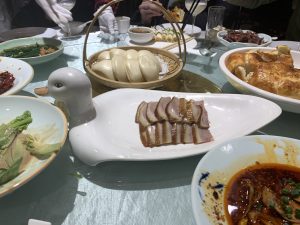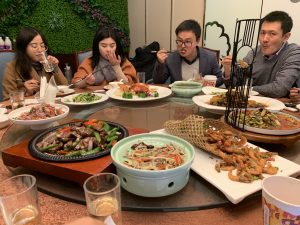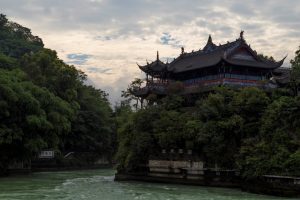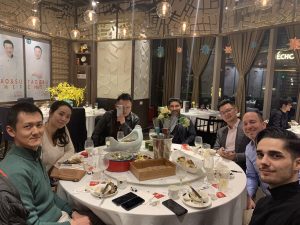Discovering Chengdu – City of the Panda
Discovering Chengdu, China – City of the Panda
Chengdu has distinct food (not just spicy), culture, and scenery
Most meaningful experience: Really enjoyed learning about the Chengdu culture of food, fun conversation, and history.
- Watch a traditional Sichuan “changing of the face” opera performance in Jinli Pedestrian Street
- Sample the local hot pots and deliciously spicy cuisine
- Explore the Taoist temples of Mount Qingcheng – the birthplace of Taoism
- Come face-to-face with pandas (both black-and-white and red) at the Chengdu Research Base of Giant Panda Breeding
- Visit the Bronze Age archaeological site of Sanxingdui
Renowned for dishing up some of the spiciest and most delicious food in China, Chengdu fuses traditional culture with a cosmopolitan allure. In October 2015, I finally made it to this rapidly-developing city, which is not just home to the high-rise offices of some of the globe’s biggest software companies, but also ancient Chinese temples and a world-famous breeding center for pandas.
For me, highlights of the city included the New Century Global Center (the world’s largest building in terms of floor area), which is home to a waterpark, two hotels and a couple of dozen restaurants. In stark contrast was the beautiful Buddhist monastery of Wenshu Yuan and the bustling open-air market along Jinli Street. After dining at the same hot pot restaurant that Michelle Obama visited, we watched a “changing of the face” show – a style of Sichuan opera – with my favorite part being the mask changing between Spiderman and Doraemon. (insert video link: http://youtu.be/7c3nz-x6HMM)
But for many visitors, the highlight of the region is the Chengdu Research Base of Giant Panda Breeding, which is situated around 30 minutes’ drive from the city. Visitors can wander through the open-air, forested setting and get up close to pandas as they gnaw through thick, bamboo trunks. Not only is the center home to the iconic black-and-white panda but also the charming red panda, which I thought resembled a big, fuzzy fox.
Slightly further away is Sanxingdui, a Bronze Age archaeological site where spiritual artifacts dating back 6,000 years have been uncovered. It’s home to four main attractions – a sacrificial altar and three museums displaying pottery, bronze heads with eyes dangling out and a large money tree that pointed towards the gods as an offering.
Also within easy access of Chengdu is Jiuzhaigou, which has been described by some as China’s answer to Yosemite. It’s home to rugged mountain scenery and turquoise-colored lakes that were carved over thousands of years by glaciers. But despite the consistent rain (and the fact that it was meant to be the low season), it was teeming with thousands of people. While the efficient bus system made it bearable to get from place to place, I probably wouldn’t visit the park again. Instead, I’d opt to just relax in one of the nice hotels to soak up the fresh air and feast on local hotpot and barbecued lamb.
Speaking of food, Chengdu really delivers, with as much spice as I had yearned for. Hot pot is on every corner and the locals eat it almost every day (although I did learn that there are more stomach surgeries per capita here than in any other region in the world). While I didn’t try the curd blood hot pot, I loved the spicy vegetable soup, spicy tofu and spicy braised pork knuckle, as well as pear tea and a spicy fruit cocktail.
Chengdu re-visited in 2019
When I returned to Chengdu just over three years later, it was to celebrate the opening of a friend’s business incubator (there are 200 business incubators in a city of 11 million). Unfortunately, I didn’t get out of the city to explore as much as my previous trip but did discover some of the massive shopping malls that have been constructed in the city center (insert video link: https://www.youtube.com/watch?v=h4X1eZQf1G8).
I also ventured to the resort town of Mount Qingcheng, which is considered the birthplace of Taoism and scattered with temples. Together with its unique irrigation system, the mountain has been designated as a UNESCO World Heritage Site and reminded me of the Smoky Mountains in Tennessee. A highlight again was the food and some of the freshest I’d tasted in the region – I think I ate three hot pots in 24 hours!
While I’d thought all cuisine in Chengdu was spicy, it turns out that’s not the case. I also learnt on my return trip that Chengdu was responsible for printing the world’s first paper money more than 1,000 years ago and that it hasn’t changed its name for 2,500, making it the longest continually-named city in history.





